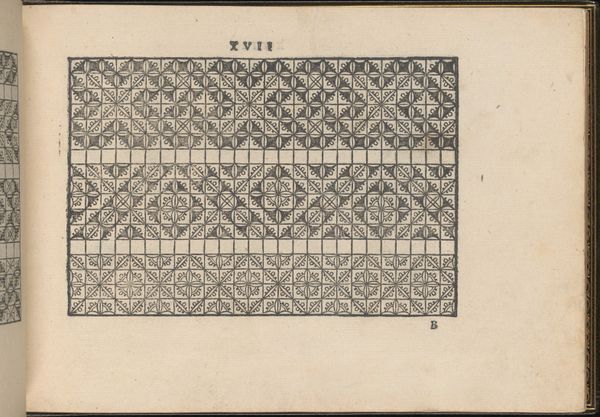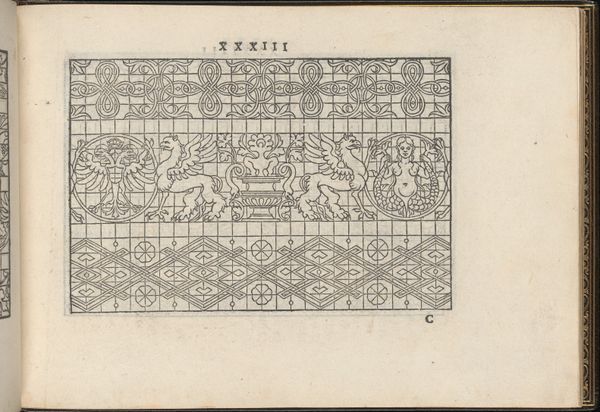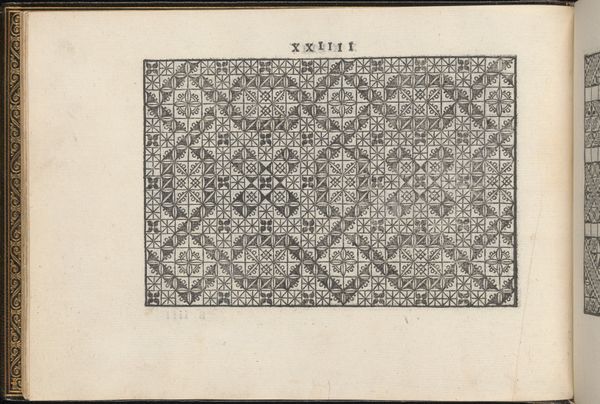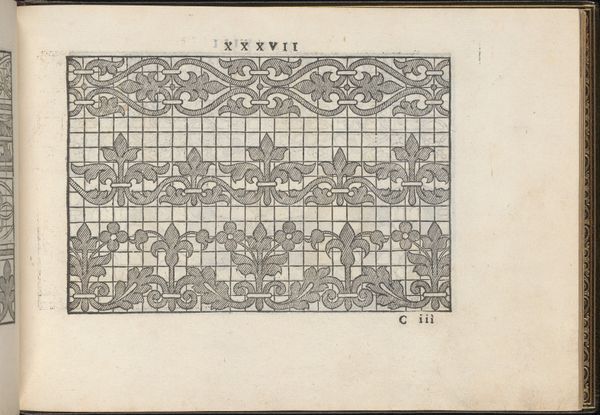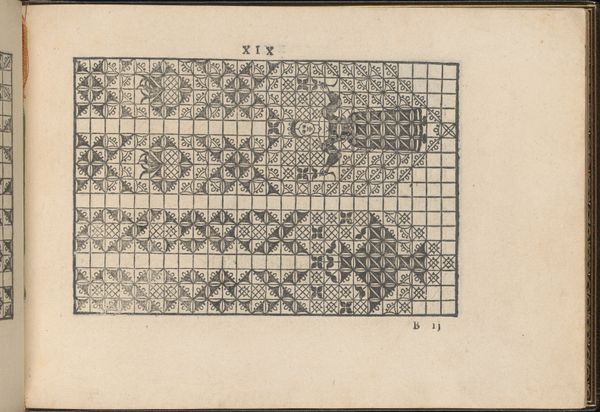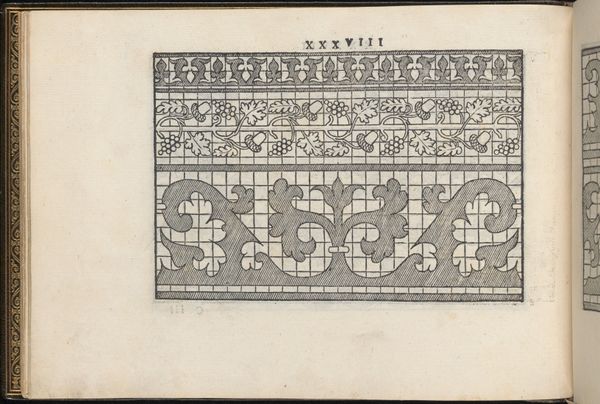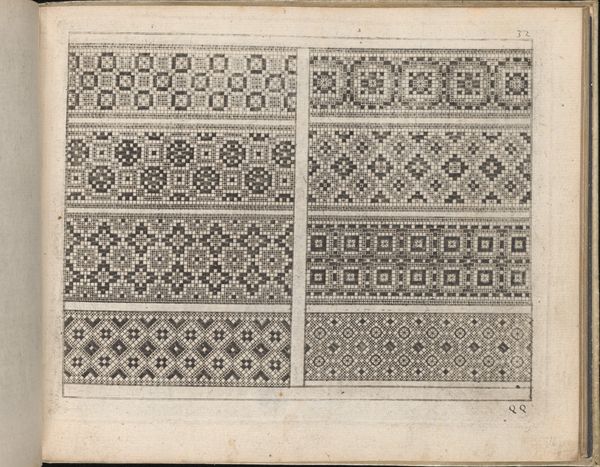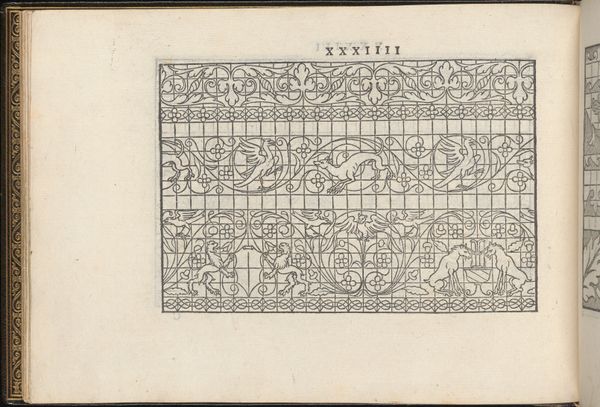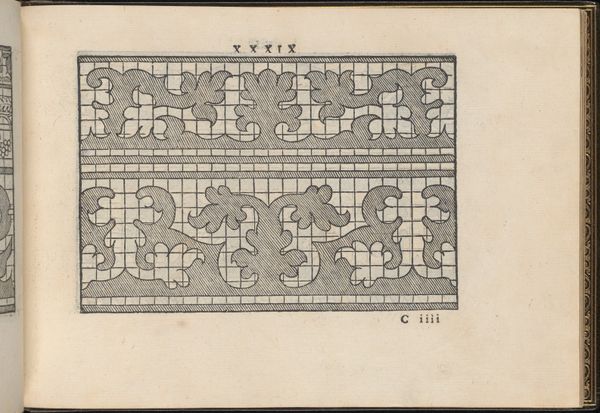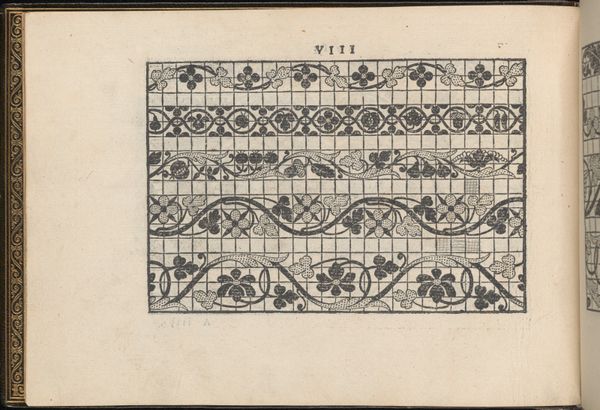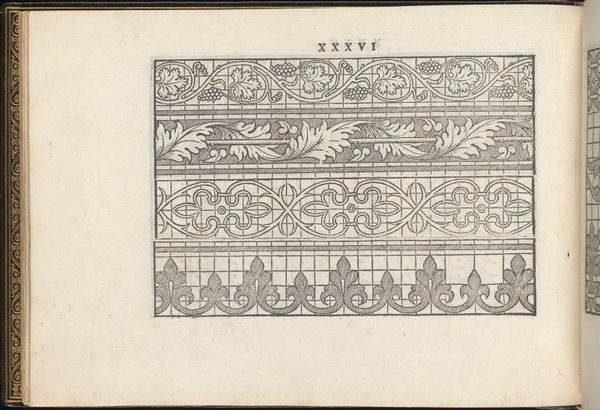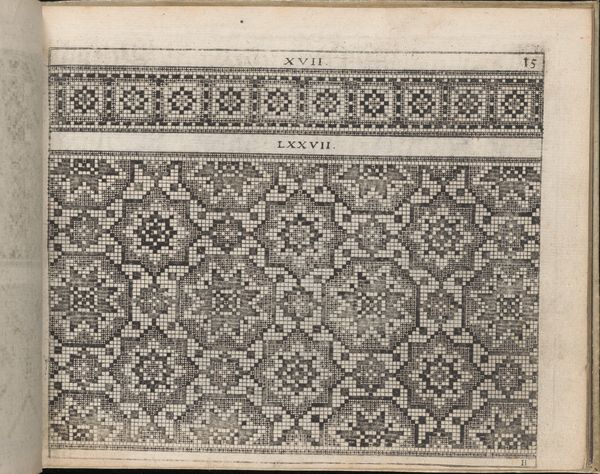
La Vera Perfettione del Disegno di varie sorti di recami, page 14 (recto) 1567
0:00
0:00
drawing, print, intaglio
#
drawing
# print
#
intaglio
#
11_renaissance
#
geometric
#
line
#
decorative-art
#
italian-renaissance
Dimensions: Overall: 6 5/16 x 8 7/16 in. (16 x 21.5 cm)
Copyright: Public Domain
Curator: The crisp linework of this page, entitled "La Vera Perfettione del Disegno di varie sorti di recami, page 14 (recto)", immediately strikes me. It looks almost…industrially precise. Editor: It does, doesn't it? I'm initially struck by how restrained it is, almost austere. Considering it dates back to 1567, its geometric patterns feel strikingly modern. Curator: Absolutely. This comes from a print by Giovanni Ostaus, created using intaglio. Its historical function provides the context: these were designs intended to instruct artisans and noblewomen alike in the art of embroidery and lacemaking, offering patterns to reproduce. Editor: So it's essentially a manual? A piece of material culture linked to domestic production and craft? These designs speak volumes about gender roles and the skilled labor involved. We see a variety of repeatable motifs meant to embellish garments, linens – everyday textiles becoming canvases. Curator: Precisely. These pattern books played a significant role in standardizing and disseminating styles across regions, influencing tastes and skills within the upper echelons and among professional artisans, allowing a new wave of skilled work. These shapes and compositions would go on to show up in so many other places throughout Europe! Editor: That makes me think of power, in a way, since these books and styles were spreading, who determined which was better and who had access? These images became integral in defining Renaissance aesthetics across different courts. Curator: Well said. And when looking at it now, so long after, we are afforded insight into that standardization of artistry across Europe at the time. It wasn’t just about the dissemination of craft. The market that rose in response would begin to define consumer practices across countries and cultures for years to come. Editor: Looking at the physical material now, I realize I keep picturing nimble hands, threads of silk or gold, carefully replicating these patterns. These pages offered templates but left space for personalized interpretation, a way for those needleworkers to also add their own expression in terms of materials used. Curator: A collaboration between the printed design and the hands of the maker. These manuals fostered a sense of collective knowledge, passed down from person to person across years. I like the thought that the work itself represents cultural heritage in motion. Editor: It’s remarkable to consider how this ostensibly simple print reveals so much about social practices and economic exchange within the Italian Renaissance. Curator: Indeed. It shows us how art permeates so much more than art; in craft, commerce, even the shaping of identity.
Comments
No comments
Be the first to comment and join the conversation on the ultimate creative platform.
